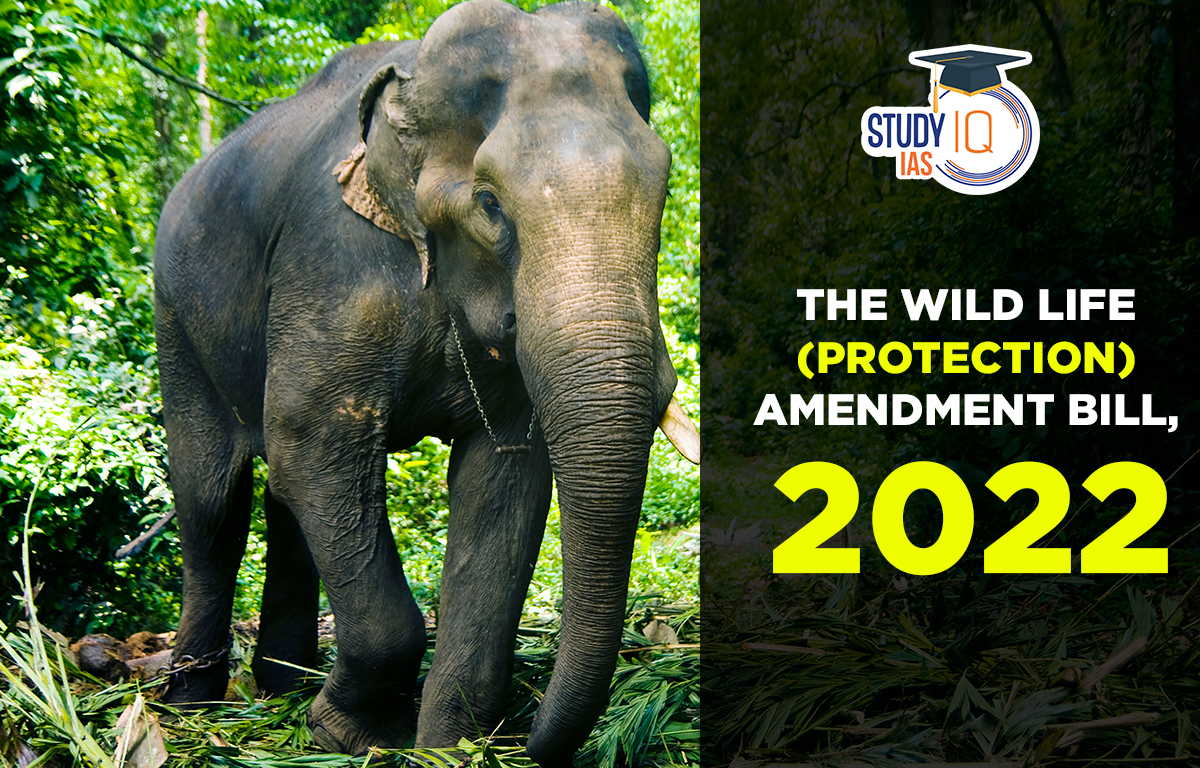Table of Contents
Key Features of Wild Life Protection Amendment Bill, 2022
|
About |
|
|||||||||
|
Implementation of CITES |
Obligations under CITES
Additionally, every person possessing live specimens of scheduled animals must obtain a registration certificate from the Management Authority. |
|||||||||
|
Rationalizing Schedules |
|
|||||||||
| Invasive Alien Species |
|
|||||||||
| Surrender of Captive Animals |
|
|||||||||
| Conservation Reserves |
|
|||||||||
| Control of Sanctuaries: |
|
|||||||||
| Penalties | The Bill increases the fines for violating the provisions of the Act.
|
Concerns Associated with the Wildlife Protection Bill
- Elephant protection: The bill permits the transfer or transport of a captive elephant for a religious or any other purpose by a person having a valid certificate of ownership.
- The sweeping ambit of “any other purpose” in the present amendment will empower elephant traders, put wild populations at greater risk of capture and defeat the very purpose of WLPA.
- Instead, the Parliamentary Standing Committee recommended that it should be limited to temple elephants kept for religious purposes.
- Vermin species: The Bill seeks to do away with Schedule V for vermin species entirely.
- This gives the Centre direct power to declare any species to be ‘vermin’ and make way for them to be freely hunted. Thus, declaring any species as vermin becomes easier.
- Against Federal Structure of Indian Constitution: Protection of wild animals and birds is a subject under the Concurrent List of the Constitution. The bill reduces the state’s involvement in wildlife management and injures India’s Federal structure.
What is CITES?
- The Convention on International Trade in Endangered Species of Wild Fauna and Flora (CITES) is an international agreement to which States and regional economic integration organizations adhere voluntarily.
- CITES was drafted as a result of a resolution adopted in 1963 at a meeting of members of the International Union for Conservation of Nature (IUCN). It entered into force in July 1975.
- Aim: Ensure that international trade in specimens of wild animals and plants does not threaten their survival.
- The CITES Secretariat is administered by UNEP (The United Nations Environment Programme) and is located at Geneva, Switzerland.
- The CITES classifies plants and animals according to three categories, or appendices, based on threat. They are:
- Appendix I species: It lists species that are in danger of extinction. It prohibits commercial trade of these plants and animals except in extraordinary situations for scientific or educational reasons.
- Appendix II species: They are those that are not threatened with extinction but that might suffer a serious decline in number if trade is not restricted. Their trade is regulated by permit.
- Appendix III species: They are protected in at least one country that is a CITES member states and that has petitioned others for help in controlling international trade in that species.


 Phone-tapping in India, Legal Framework ...
Phone-tapping in India, Legal Framework ...
 Bihar Assembly Election 2025 Dates, Poli...
Bihar Assembly Election 2025 Dates, Poli...
 Jharkhand High Court Assistants Admit Ca...
Jharkhand High Court Assistants Admit Ca...





















